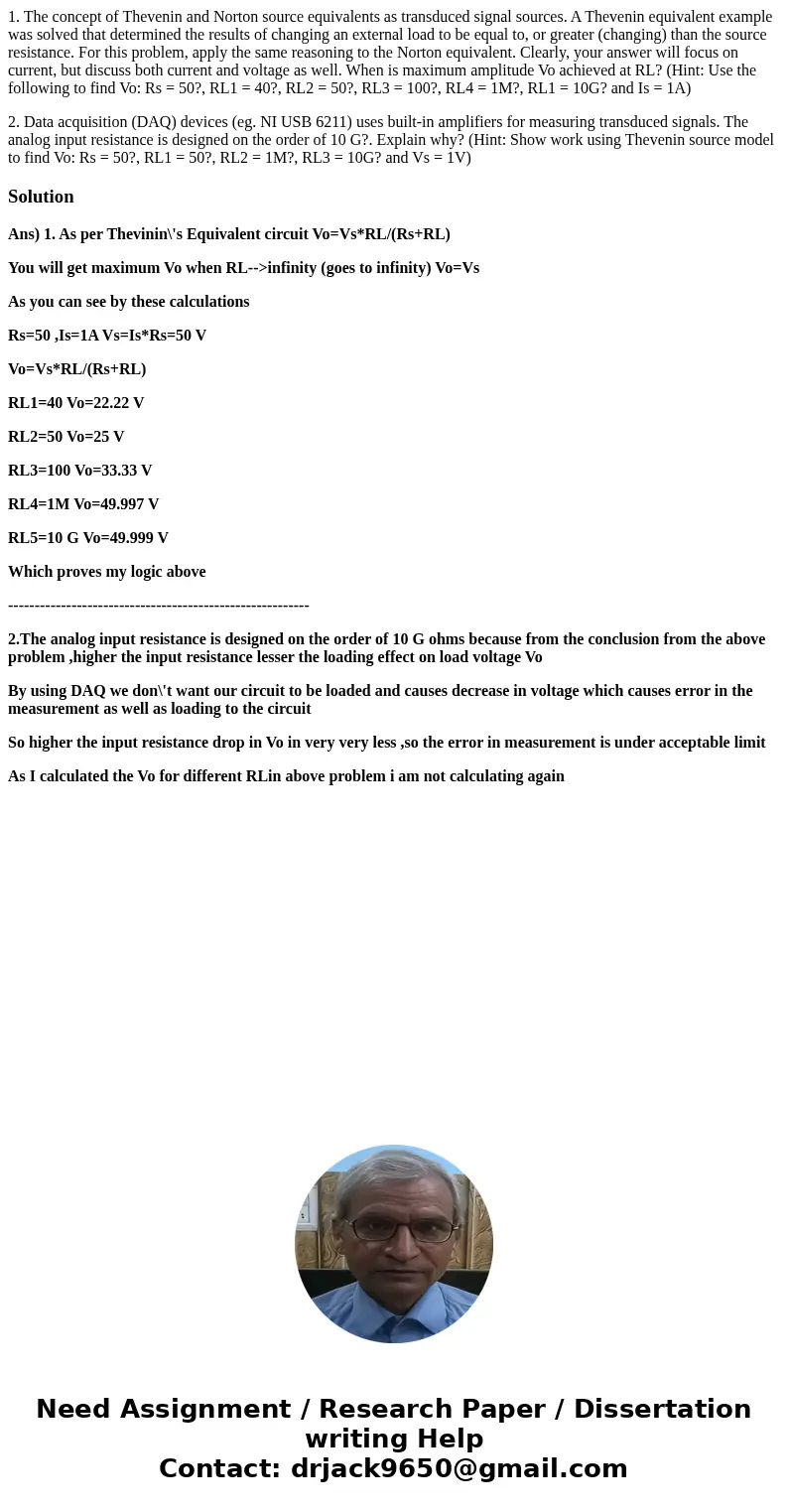1 The concept of Thevenin and Norton source equivalents as t
1. The concept of Thevenin and Norton source equivalents as transduced signal sources. A Thevenin equivalent example was solved that determined the results of changing an external load to be equal to, or greater (changing) than the source resistance. For this problem, apply the same reasoning to the Norton equivalent. Clearly, your answer will focus on current, but discuss both current and voltage as well. When is maximum amplitude Vo achieved at RL? (Hint: Use the following to find Vo: Rs = 50?, RL1 = 40?, RL2 = 50?, RL3 = 100?, RL4 = 1M?, RL1 = 10G? and Is = 1A)
2. Data acquisition (DAQ) devices (eg. NI USB 6211) uses built-in amplifiers for measuring transduced signals. The analog input resistance is designed on the order of 10 G?. Explain why? (Hint: Show work using Thevenin source model to find Vo: Rs = 50?, RL1 = 50?, RL2 = 1M?, RL3 = 10G? and Vs = 1V)
Solution
Ans) 1. As per Thevinin\'s Equivalent circuit Vo=Vs*RL/(Rs+RL)
You will get maximum Vo when RL-->infinity (goes to infinity) Vo=Vs
As you can see by these calculations
Rs=50 ,Is=1A Vs=Is*Rs=50 V
Vo=Vs*RL/(Rs+RL)
RL1=40 Vo=22.22 V
RL2=50 Vo=25 V
RL3=100 Vo=33.33 V
RL4=1M Vo=49.997 V
RL5=10 G Vo=49.999 V
Which proves my logic above
---------------------------------------------------------
2.The analog input resistance is designed on the order of 10 G ohms because from the conclusion from the above problem ,higher the input resistance lesser the loading effect on load voltage Vo
By using DAQ we don\'t want our circuit to be loaded and causes decrease in voltage which causes error in the measurement as well as loading to the circuit
So higher the input resistance drop in Vo in very very less ,so the error in measurement is under acceptable limit
As I calculated the Vo for different RLin above problem i am not calculating again

 Homework Sourse
Homework Sourse